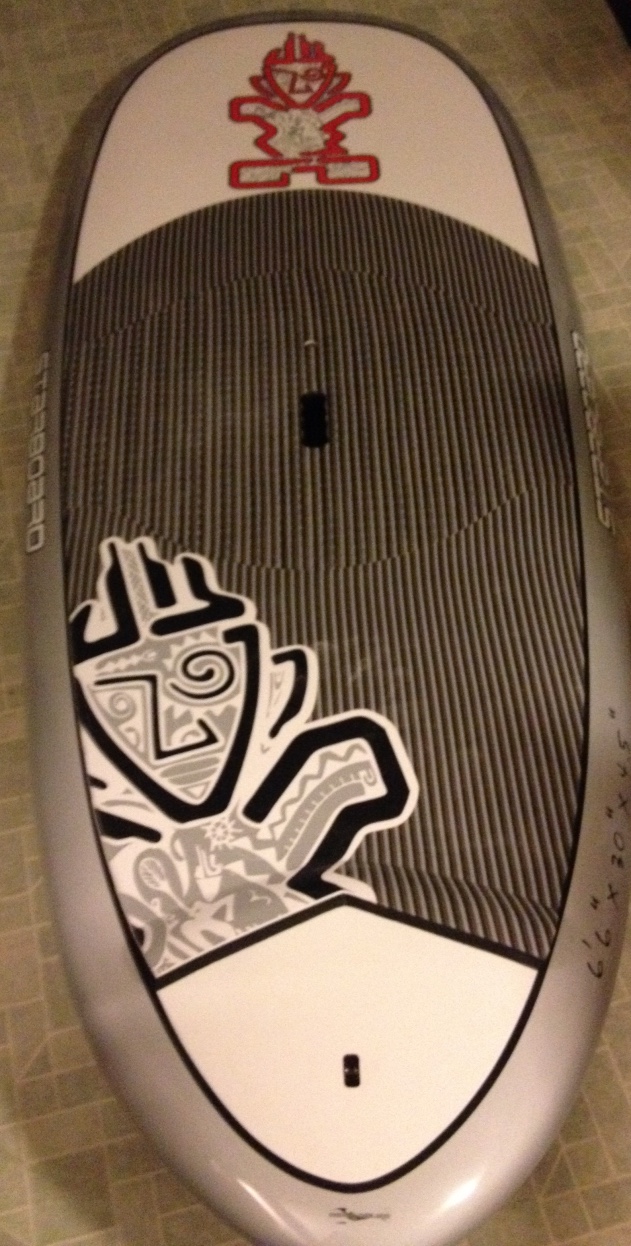
Review: Starboard Impossible
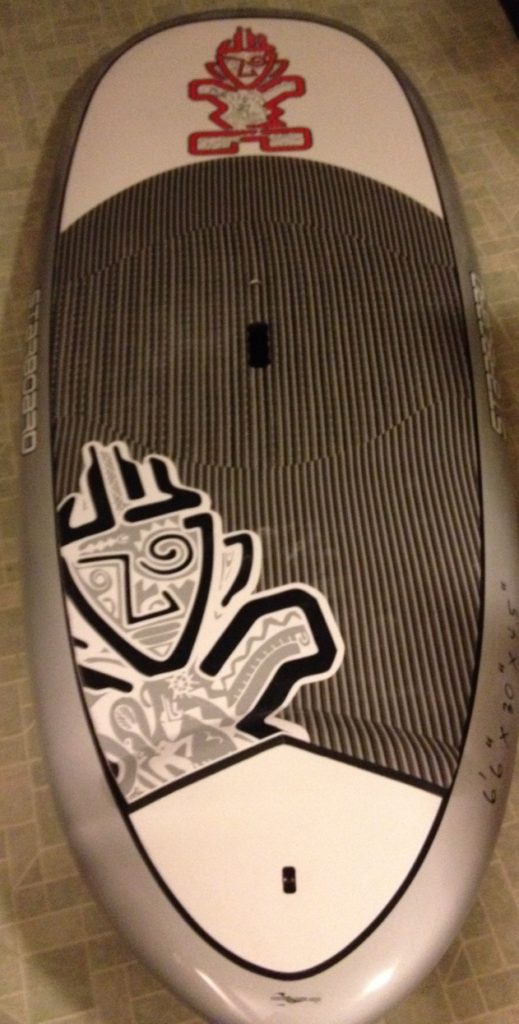
Short Review:
4 out of 5 stars for large, clean, big river waves. For small waves, like those found in most whitewater parks, I give this board a 2.5 out of 5.
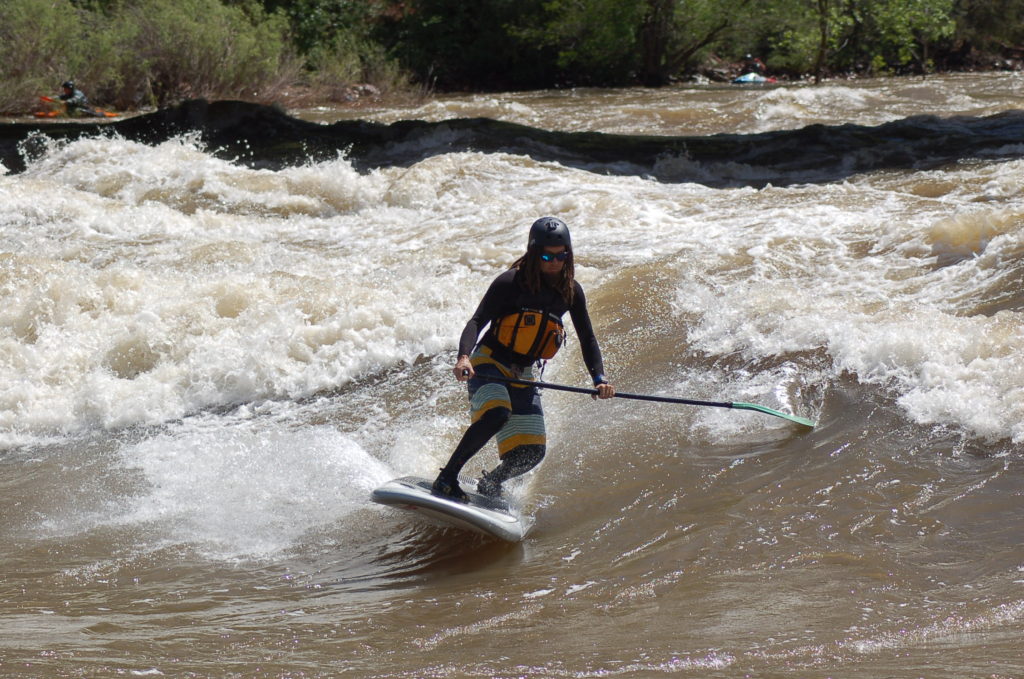
the Impossible ripping Glenwood during peak run off
Long Review:
The strange looking 6’6″ x 30″ Starboard Impossible was originally designed for ocean waves. Surprisingly, the unique shape works great on river waves, maybe even better than ocean waves. The Impossible doesn’t seem to have gained popularity in the ocean. Starboard made the Impossible for a few years then discontinued it, but lucky for us river surfers there are still Impossibles that can be found.
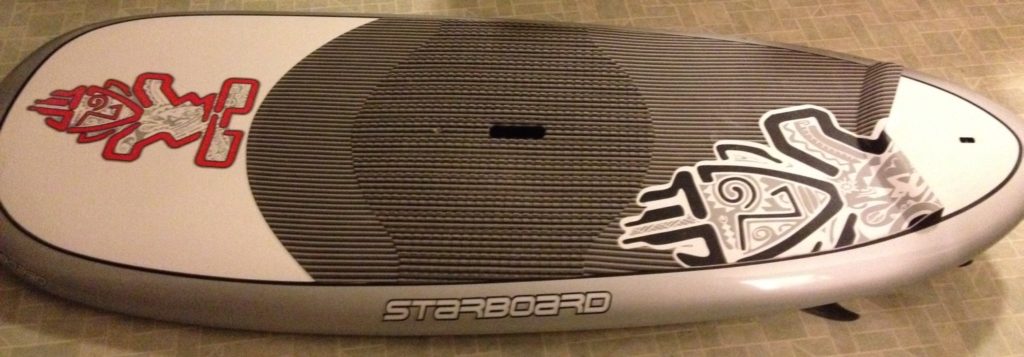
Looking at the Impossible, it’s shaped like a traditional 11 foot SUP cut in half. Why would you only want the tail half of a full sized SUP? As it turns out, when you’re river surfing, that’s pretty much all you need. When you surf a longer SUP on river waves, most of the time you’re making large turns and never setting a rail like you would on an ocean wave. Checkout this video and watch how much of the board the surfer uses. Notice that the front 2-3 feet of the board rarely touch the water:
You can imagine, that the board in the video would surf that wave nearly the same even if you chopped 2 feet off the nose. On an ocean wave having that full length is important. It allows you to make a turn and set your full rail into the face of the wave and shoot across it. This is what’s happening when you see ocean surfers riding waves with their boards perpendicular to the direction the wave is moving. This style of surfing almost never happens in river surfing.
Now take a look at this clip of me surfing the Impossible. You’ll notice that I surf it in a similar style as the above surfer, but there’s less “extra” board.
How does a shorter board effect your river surfing? In a river surfing environment there are a few key benefits of having a shorter board:
- More maneuverable, easier to turn
- Easier to perform tricks on, in particular grinds, 180s, 360s
- Less shuffling your feet back and forth on the board
- More likely to fit into smaller, steeper waves than a longer board
Of course short boards also have their drawbacks. They’re more difficult to learn on, and slower to paddle (which can make catching and staying on river waves more difficult). It’s often the case, that when you are learning you want a bigger board and as you progress you transition to smaller and smaller boards. The Impossible is definitely for intermediate to advanced paddlers.
The only times this board has trouble in big river waves is when there is a lot of whitewater. At just 30″ wide, 113 liters of volume, and a narrow tail, the Impossible becomes fairly unstable when the wave has a lot of whitewater pushing you forward. On large river waves, there is often a section of whitewater you need to paddle through/past to get to the good part of the wave. This can be difficult on the Impossible.
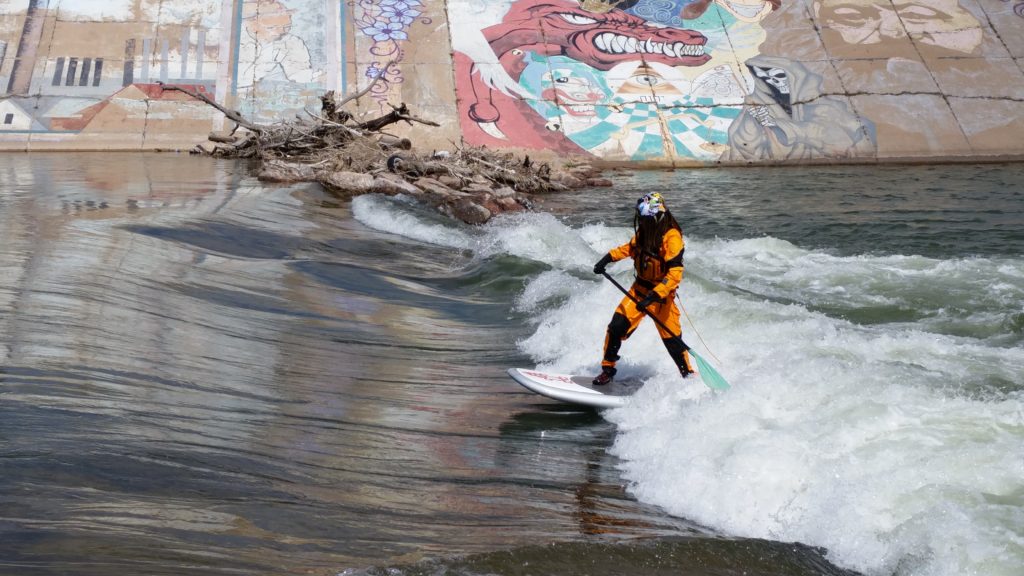
Pueblo’s 3rd wave, at these levels is almost completely a foam pile
When surfing small river waves, the Impossible fails to impress in several areas. Often small river holes have a steep section in front of the wave. To surf these holes you need to stand further back on the board. Unfortunately the tail of the Impossible is so narrow and low in volume that the board becomes very unstable when pressing on the tail. And since the board lacks much nose rocker, you need to fight to keep the board from pearling.
The other major concern in small river waves is hitting rocks. The Impossible (non-carbon version) is as fragile as egg shells. Small bumps against rocks in the eddy, or even smacking your paddle against the rail will cause flaking of the painted outer shell. More intense hits will cause dings that need to be fixed immediately to avoid taking on water. Adding a bunch of rail tape is a must. The Impossible requires a careful touch to avoid destroying it.
The Starboard Impossible was my favorite board in my quiver last year. I surfed the heck out of it at Glenwood and really learned to enjoy the responsive, short board. The flat rocker profile allows the board to surf even the slowest, smallest waves where you would expect to have to use a longer board. Because the board was designed for ocean waves, it surfs like an ocean board. It can make river waves feel like ocean waves, which is the sensatation I am constantly chasing.
As the water levels dropped at the end of last year’s season, I continued to surf the Impossible at my local whitewater parks, where (unfortunately) I dinged the hell out of it. After one season of use it looked like a beater board. This season, I have a new Impossible that I’m saving to only surf on good waves at high water. Other times I’ll grab a more durable board and leave the Impossible at home.
I have the chance of grabbing this board, new from old stock for a fair price, would you recommend it for learning river and sea surfing?
I would not recommend this board for learning river or ocean surfing. A beginner river surfer will likely destroy this board before getting the hang of it. For a beginner SUP ocean surfer, it is likely too unstable (unless you weight 100 lbs or less) to make learning to SUP surf any fun.